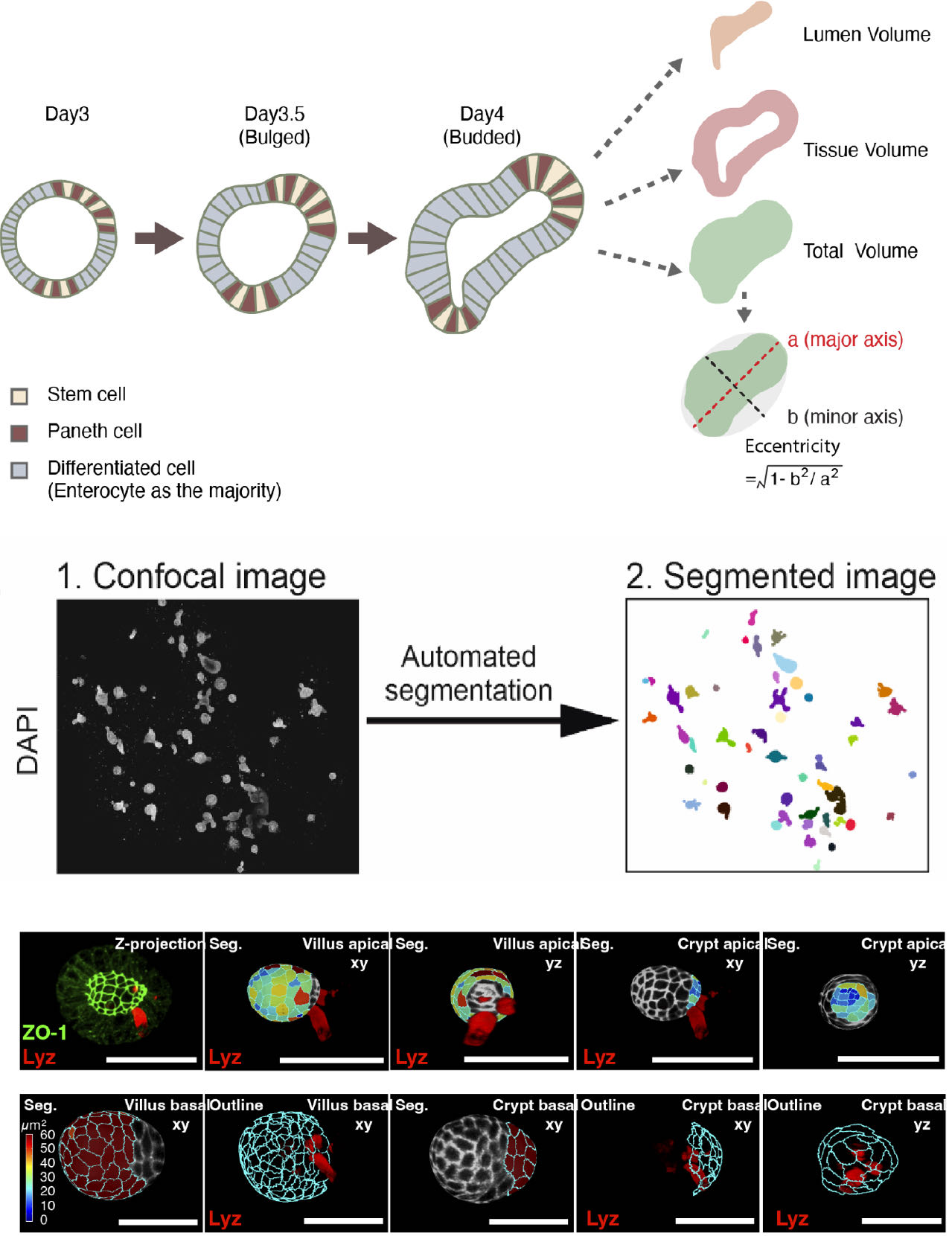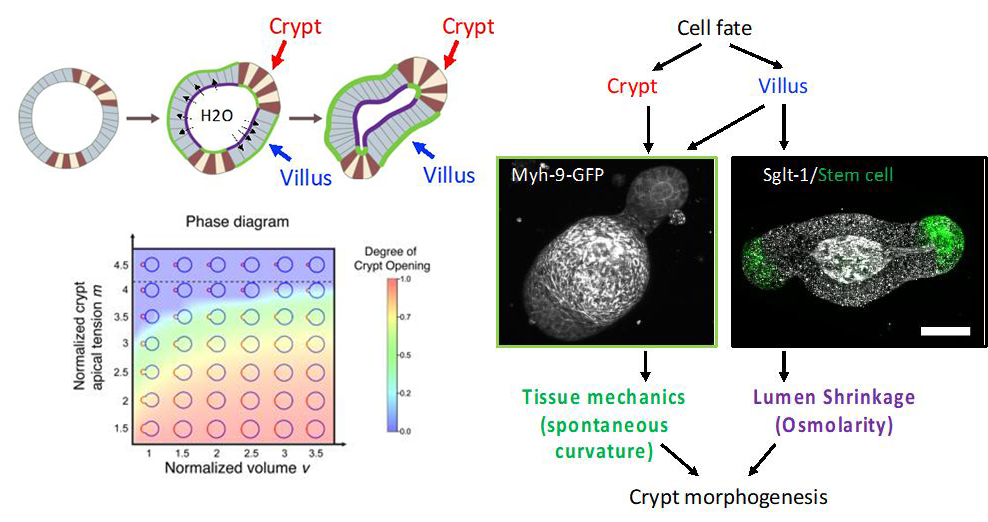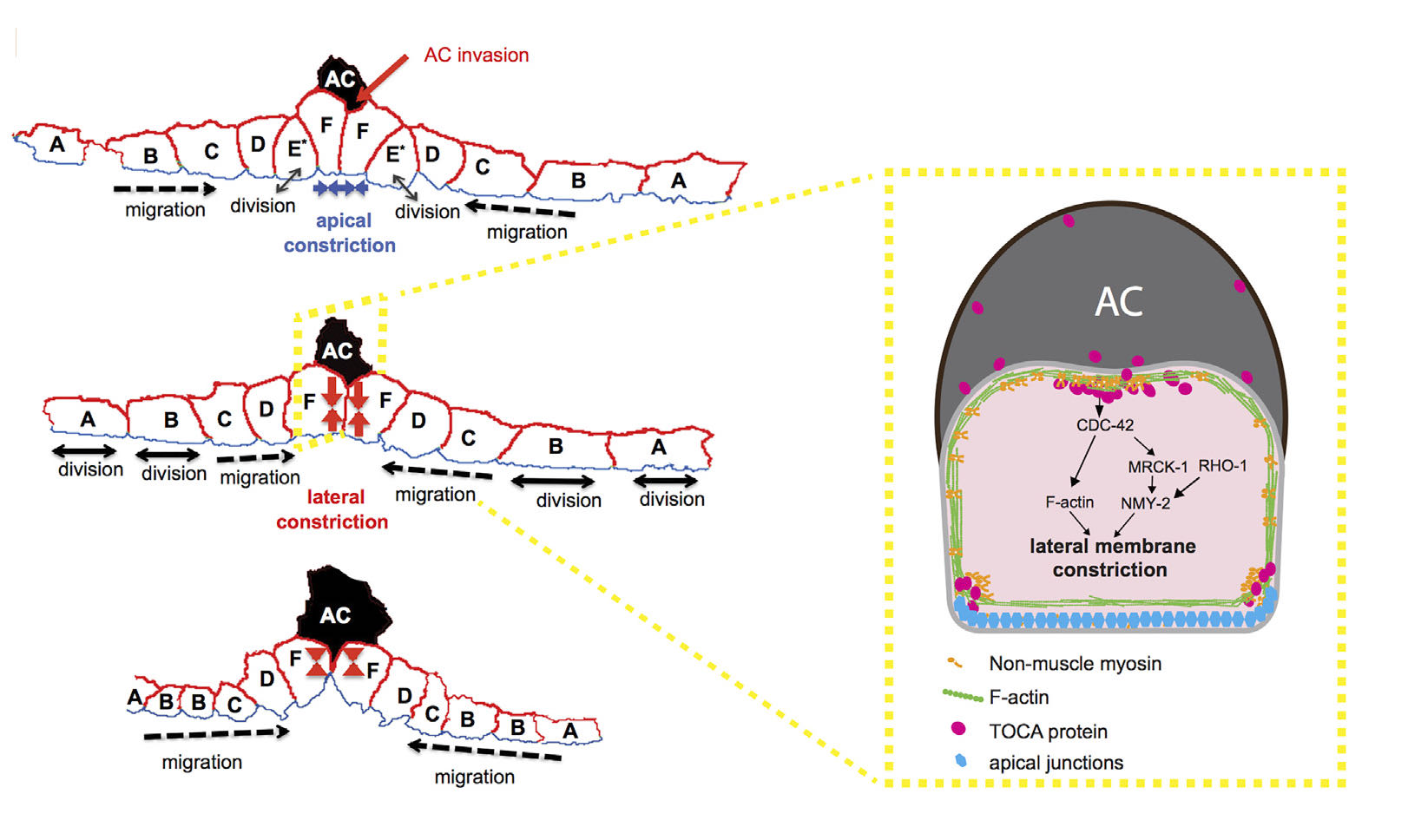| Three-Dimensional(3D) culture of human/mammalian adult, embryonic or induced prepotent stem cells could lead to the formation of organoid, which contains both the stem-cell enriched region and the differentiated tissue.
Using the common 3D culture system, we preform large-scale data acquisition and analysis, and dissect the mechanical principles in organ morphogenesis as well as the cellular mechanobiology. We design and improve the organoid scaffolds based on our obtained knowledges. Moreover, to produce large-scale tissues that share the morphologies and physiological functions of their in vivo counterparts, we intend to provide minimum intervention to coordinate with tissue self-organization, which mimics the developmental path and could help for the large production of authentic tissues.
Concurrently, we co-culture epithelial organoid (e.g., the gut organoid) with neuronal cells, microbiota and immune cells, as well as vessel organoids, constructing the neuralized, immune and vascularized complex organoids. We compare our in vitro cultures with in vivo organs to verify the physiological function of the in vitro system, and investigate the cross-tissue cell-cell communications between the epithelial tissue and its neighboring tissues. Eventually, we refer the multi-scale mechanisms that we detected from molecule, cell and tissue scales, and built the better in vitro disease models and the tissues/organs endowed with proper physiological functions. 
Morphogenesis of intestinal organoid and the strategy of large-scale organoid image segmentation.

Cell fate coordinates mechano-osmotic forces in intestinal crypt formation.

Invasive anchor cell initiates epithelial morphogenesis through cross-tissue cell-cell communication and the subsequent activation of the mechano-sensing pathway.
| Plain English:
We study mechanobiology, quantitative biology, molecule and cellular events in the multicellular system of the epithelial organoid culture. We aim to utilize the knowledges that we learned from our studies to endow the in vitro tissues and organs with proper physiological functions. Selected publications: *Co-first author, #Co-corresponding author - Berkova L, Fazilaty H, Yang Q, Kubovciak J, Stastna M, Hrckulak D, Vojtchova M, Brugger M, Hausmann G, Liberali P, Korinek V, Basler K, Valenta T. Terminal differentiation of villus tip enterocytes is governed by distinct Tgfb superfamily members. EMBO reports 2023, 24(9): e56454. DOI: 10.15252/embr.202256454
- Yang Q*#, Xue SL*, Chan JC, Rempfler M, Vischi D, Mauer F, Hiiragi T, Hannezo E#, Liberali P#. Cell fate coordinates mechano-osmotic forces in intestinal crypt formation. Nature Cell Biology, 2021; 23(7):733-744. (Cover article )
- Yang Q, Roiz D, Mereu L, Daube M, Hajnal A. Sequential apical and lateral cell constrictions initiate vulval lumen formation in C. elegans. Developmental Cell 2017; 42(3): 271-285.
- Yang Q, Lv X, Kong Q, Li C, Zhou Q, Mao B. Dynamic expression of the LAP family of genes during early development of Xenopus tropicalis. Sci China Life Sci 2011; 54(10): 897-903.
- Haag A*, Gutierrez P*, Buuhler A*, Walser M, Yang Q, Langouet M, Kradolfer D, Frohli E, Herrmann CJ, Hajnal A, et al. An in vivo EGF receptor localization screen in C. elegans identifies the Ezrin homolog ERM-1 as a temporal regulator of signaling. PLoS Genet 2014; 10(5): e1004341.
- Ma P, Zhao S, Zeng W, Yang Q, Li C, Lv X, Zhou Q, Mao B. Xenopus Dbx2 is involved in primary neurogenesis and early neural plate patterning. Biochem Biophys Res Commun 2011; 19;412(1): 170-4.
Review and comments: - Yang Q, Liberali P. Adaptive differentiation for fast barrier restoration. Developmental Cell, 2022; 57(2): 147-148.
- Yang Q, Liberali P. Collective behavior in organoids. Current Opinion in Cell Biology, 2021;72:81-90.
- Yang Q*, Oost KC*, Liberali P. Engineering human knock-in organoids. Nature Cell Biology, 2020; 22(3): 261-263.

|

